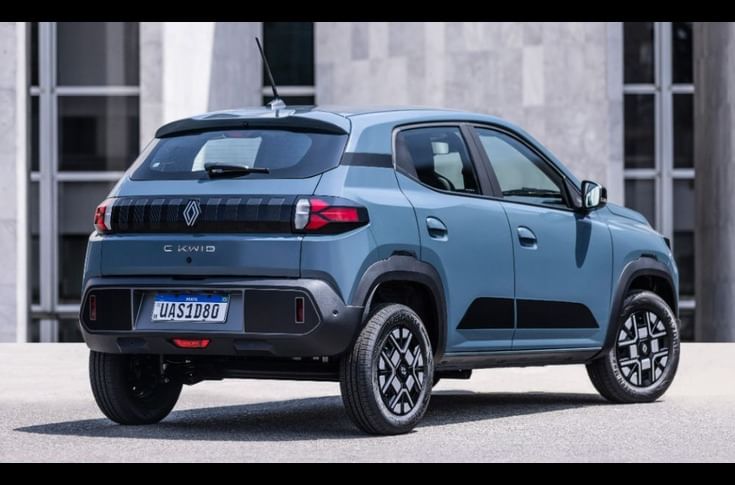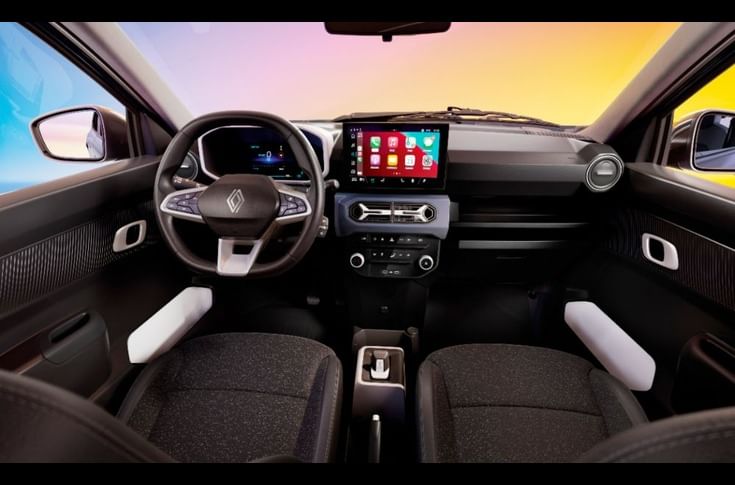Renault has released first set of details and images of the refreshed Kwid EV, known as the Kwid E-Tech in Brazil, revealing the first set of images and technical details. The updated entry-level model from Renault is essentially a badge-engineered version of the Dacia Spring EV. It rivals models like the Citroën eC3 and other budget EVs in global markets.
The 2025 Renault Kwid EV features a sharper and more angular design, drawing heavy influence from the latest Dacia Spring EV, yet retaining distinct Renault styling cues. The closed-off rectangular grille now gets vertical slats, flanked by new projector headlamps and a redesigned bumper with more pronounced cuts and creases.
The profile remains familiar, with minimal changes — the black wheel arch cladding, body-side moulding on the doors, and wing mirror mounted indicators are carried over, as are the 14-inch dual-tone alloy wheels. At the rear, the facelifted Kwid EV gains Y-shaped LED tail-lamps, while the reverse lamps remain halogen-based.
Inside, Renault has introduced more substantial updates. The refreshed Kwid EV gets a 10.1-inch touchscreen infotainment system with wireless Android Auto and Apple CarPlay, along with a 7-inch digital instrument cluster featuring new graphics. The steering wheel — now height adjustable — is shared with the latest-gen Duster, while other upgrades include two USB-C ports and improved cabin materials.
On the safety front, the Kwid EV now comes with six airbags, ABS, ESP, hill-start assist, TPMS, rear camera, ISOFIX mounts, and seatbelt reminders as standard. In some markets, Renault will also offer ADAS features such as autonomous emergency braking, lane-keeping assist, fatigue warning, cruise control, and front and rear parking sensors — a first for the model.
The facelifted Kwid EV continues to use a 26.8kWh lithium-ion battery pack, paired with an electric motor producing around 65hp. Renault claims a range of up to 250km on a single charge (as per local testing standards). The EV can charge from 20 to 80 percent in 45 minutes using a DC fast charger, while standard AC charging will take several hours.
Both the petrol and EV versions of the refreshed Kwid have been spotted testing in India multiple times. However, Renault has yet to confirm whether the Kwid EV (E-Tech) will go on sale here. If launched, it would compete with the Tata Tiago EV and MG Comet EV in the affordable electric segment. Meanwhile, the updated Kwid petrol will continue to rival the Maruti Alto K10, S-Presso, and lower trims of the Tata Tiago and Celerio.
